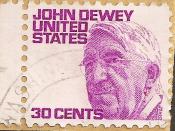ÃÂ An overview ÃÂ
Conflict is the gadfly of thought. It stirs us to observation and memory. It instigates invention. It shocks us out of sheeplike passivity, and sets us at noting and contriving ...Conflict is a "sine qua non" of reflection and ingenuity.
--John Dewey
It has been said that the Chinese symbol for conflict is a combination of the symbols for "opportunity" and "danger." This suggests that, at least in the Chinese culture, conflict includes the opportunity for resolution, and carries significant consequences if it is not resolved. The Merriam Webster Dictionary defines conflict as the "competitive or opposing action of incompatibles : antagonistic state or action (as of divergent ideas, interests, or persons)." As conflict increases, it usually results in an increased desire by the parties to "win," an increased desire to save face, and a heightened concern for vengeful actions.
Conflict is part of leading, following, doing, and thinking in an organization.
Conflict is inevitable in organizations as people with different responsibilities, training, and outlook try to coordinate. Conflict is so pervasive that it has been difficult to define. There is a great deal of conflict among social scientists about how conflict can best be defined.
Conflict is defined here as incompatible activities and behaviors One person's behavior is thought to be obstructing and interfering with another's. Conflict is often thought to be bargaining and negotiation where protagonists have opposing interests and goals. What one wants opposes and frustrates what others want. Although they have a common interest in reaching an agreement, they have competitive interests regarding what proposal should be adopted.
While many conflicts call for negotiation and bargaining, not all conflict is based on opposing goals. People with common, cooperative goals often have a great deal of conflict. Overlapping, cooperative goals do...


